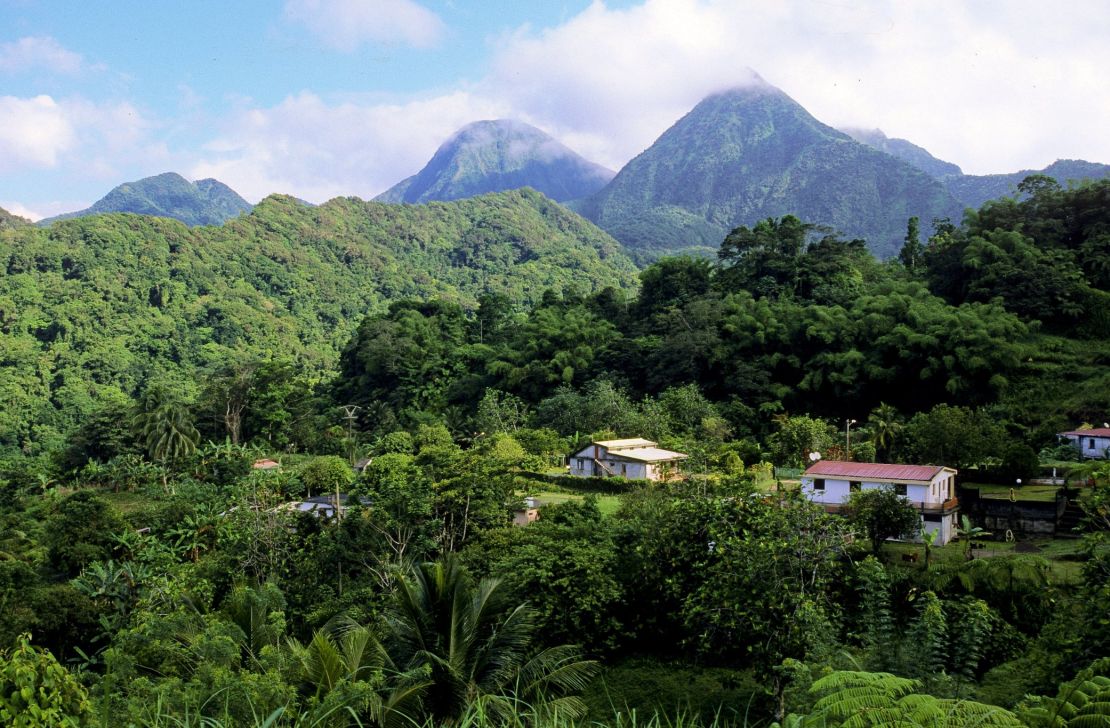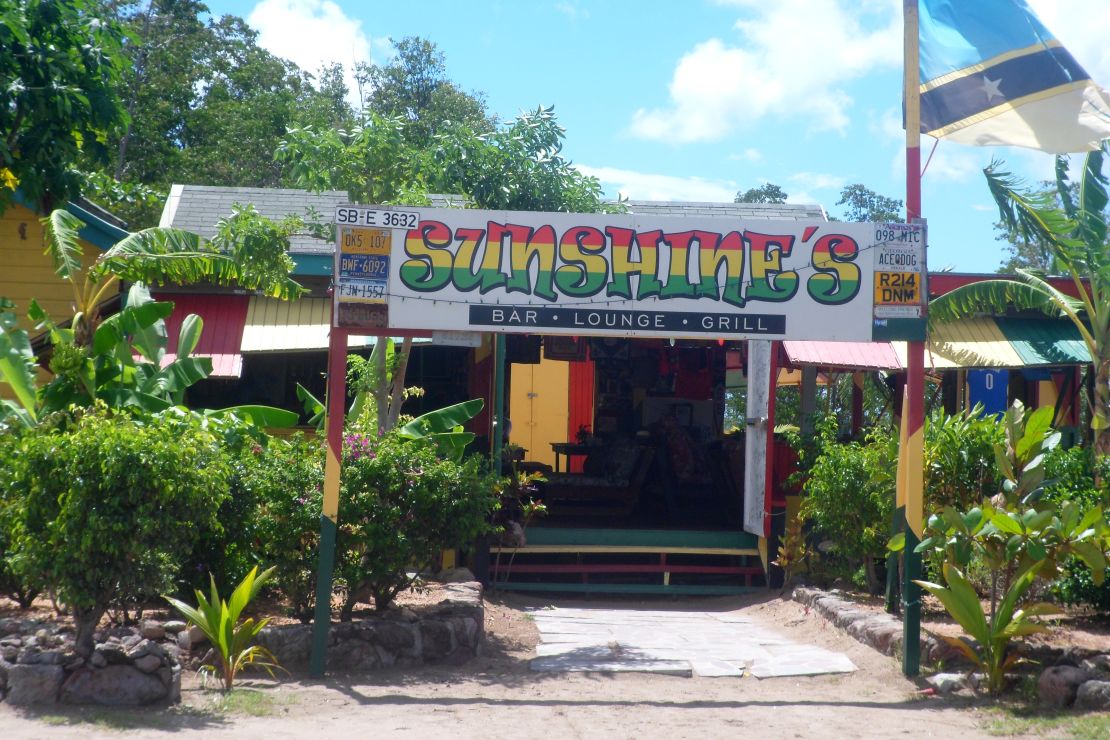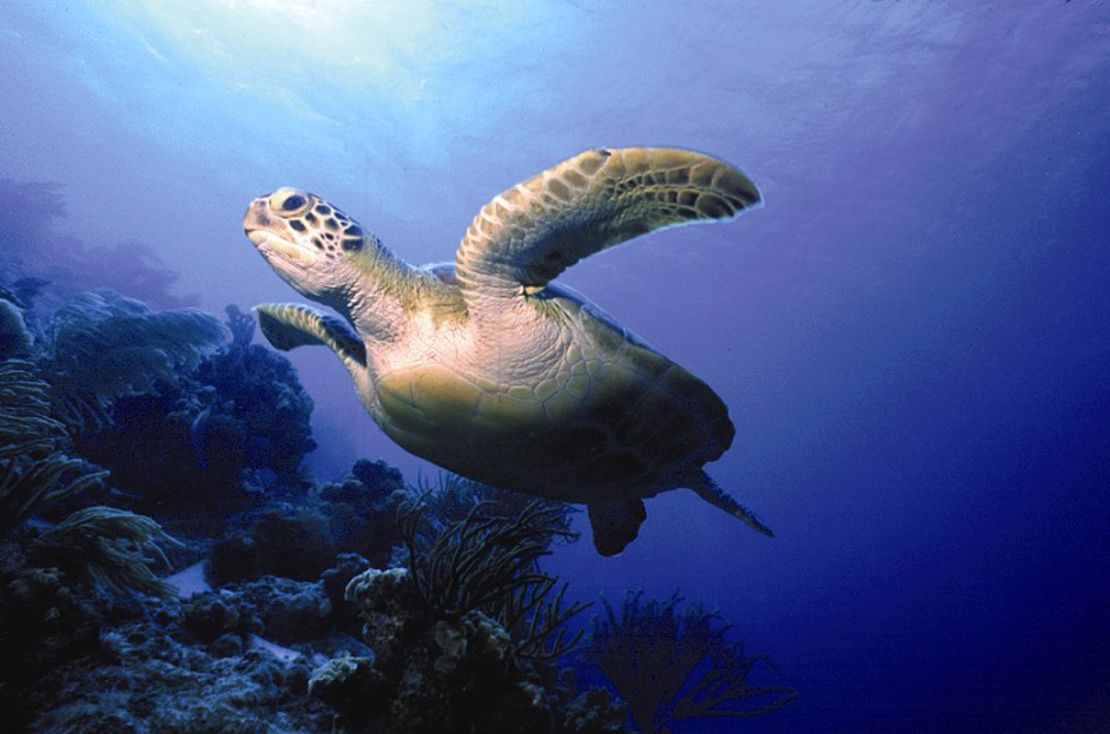Story highlights
You're all but guaranteed to see turtles gliding above the pristine white sands while diving in Bonaire
The Valley of Desolation is filled with bubbling mineral pools and fast-flowing rivers
Goat water may sound unappetizing, but this cross between Irish stew and oxtail soup is delicious
Butter-colored sands.
Fluttering palm trees.
Cinematic sunsets.
We all understand the appeal of the Caribbean, but with visitor numbers rising year after year – according to the United Nations World Tourism Organization more than 25 million people visited the region last year – is there anything left of the older Caribbean?
The following destinations aren’t the easiest to reach – expect twin-prop planes and a distinct lack of road signs and rest stops – but the quieter nooks of the Carib are worth seeking out.
Secret Road

Route de la Trace (Martinique)
An ostentatious slice of the Cote d’Azur that’s floated off to the Caribbean.
That’s how most visitors perceive the French territory of Martinique.
But take the N3 road north and you’ll soon be far away from the bling and Burgundy set.
Departing from Fort de France in the direction of Morne Rouge, the road runs along the volcanic Pitons du Carbet with sign-posted hiking trails radiating off the main route.
Otherwise known as the Route de la Trace, this coiling snake of asphalt was originally built in the 1600s by Jesuits, the road they toiled to create curls around bamboo forests, small botanical gardens, ferns and even a small size replica of the Sacré-Coeur Basilica from the motherland.
At the end of the road, rising high into the clouds on most days, sits the still active Mont Pelee, which destroyed the entire town of St. Pierre when it last erupted back in 1902.
The rocky climb takes around three hours but the view from the top of the rim over the dimpled green peaks of the island is, on a clear day, one of the finest in the Caribbean.
And you’ll almost certainly have it all to yourself.
Route de la Trace, Highway N3; Martinique
MORE: 10 most affordable Caribbean hot spots
Secret “locals” experience
Meet the People tour (Cuba)
Township tours, where tourists get to look at poor people through the windows of a minibus, are often patronizing.
The charity Traidcraft, however, have bucked this trend with its Meet the People tour of lesser known parts of Cuba.
Ostensibly designed to show the consequences of the long standing U.S. trade embargo on the island (and the ingenuity of the methods used to get around it), in reality the tour is an instant fast track into the lives of Cubans who you simply won’t meet poolside at the resorts.
You could find yourself taking in a traditional hog roast with a Cuban farming family, touring the orchards of fruit farmers in Ciego de Avila or simply chatting with the workers at the sharp end of the Cuban economy.
It’s a tour that is, thankfully, short on predictable snapshot moments yet fascinating in its ability to introduce you to the everyday side of an island that has long been forced to mend and adapt to some of the world’s hardest trade restrictions.
Saddel Skedaddle, The Cycle Hub, Ouseburn Regeneration Centre, Newcastle upon Tyne, UK; +44 (0)191 265 1110
Secret National Park
Arikok National Park (Aruba)
You’d be forgiven for thinking you were somewhere in Australia’s Northern Territory were you to wake up on the northeastern corner of Aruba.
Here you’ll find Arikok: quite simply a different universe.
A desert wilderness of abandoned gold mines, massive cacti, wandering goats, limestone caves and the odd mud-and-grass ancient farmhouse, this is a trip through time to what most of Aruba would have looked like in the 1800s.
This was a time when many Caribbean islands were all but ignored by colonists, thought of as mosquito- and rattlesnake-filled death traps.
Hiking (you’ll want to carry plenty of water) on the 34 kilometers of self-guided trails through the park gets you close to all kinds of bizarre and lonesome sights in this harsh environment.
These might include Arawak Indian rock drawings and burrowing owls; or it might simply amount to the relief of downing an ice cold bottle of local Balashi beer from your cooler on one of the deserted sandy beaches.
Arikok National Park, San Fuego 70, Aruba; +297 585 1234
Secret cocktail

The Killer Bee (Nevis)
As with all the most authentic Carib eateries, Sunshine’s Beach Bar and Grill on Pinney’s Beach in tiny Nevis doesn’t look like it’ll be winning any Michelin stars any time soon.
The most basic of huts, with a couple of picnic tables outside, the food, mainly spicy shrimp and fresh lobster at knock down prices, is a delight.
But the real thrill comes when you order a “killer bee” cocktail – the most popular drink on the island, and one that locals will tell you is prepared properly only at Sunshine’s.
Involving rum and honey, the secret element comes from all manner of other ingredients that may or may not include black pepper and nutmeg.
The waiters here will tell you that none of the Internet recipes that claim to have figured out the secrets have got it right so far.
Poured out of a milk container into a plastic cup, the amber glow of the drink seems fairly harmless at first.
But if you want to drink like the locals, and probably have a sore head the following morning, getting stung by a killer bee (or four) is a rite of passage in Nevis.
Sunshine’s Beach Bar and Grill, Pinney’s Beach, Charlestown, Saint Kitts and Nevis; +1 869 469 5817
MORE: 7 secret Caribbean islands
Secret beach
Klein Curaçao (Curaçao)
A two-hour sail on the turquoise waters off the mainland, Klein Curaçao is a place to wrap a Do Not Disturb sign around your waist and get involved in some serious beach combing on a pancake flat, uninhabited island with an eight-mile-long soft sandy beach – and very little else.
You can walk along the beach to gaze at the ancient shipwreck or walk around an abandoned lighthouse.
Or just hang out on the beach.
Either way, the company will be limited to a handful of local fisherman and perhaps the odd school of dolphins who have a habit of following the boats that bring visitors here.
Klein Curaçao, Island 2 hours off the coast of Curaçao
Secret birding hub
Asa Wright Nature Centre (Trinidad and Tobago)
Little visited by tourists and regarded as the industrial hub of the Caribbean, Trinidad is a major destination for birdwatchers who generally have this former coffee plantation to themselves.
A 200-acre reserve in the island’s northern mountain range, the Asa Wright Nature Centre is now a dense mass of rainforest and mangrove swamps, alive with more than 400 species, including scarlet ibises, toucans, parrots, hummingbirds and yellow orioles.
Guides are highly knowledgeable and even if the ultra-rare oilbird (one of the main draws for birders) doesn’t emerge, you can head back to the Edwardian-era lodge, a good place for a cocktail as the sun dips below the mountains.
Asa Wright Nature Centre, Blanchisseuse Road, Arima, Trinidad; +1 868 667 4655
Secret hike
Valley of Desolation (Dominica)
Filled with bubbling mineral pools, fast-flowing rivers and powerful jets of steam shooting out of the earth, the aptly named Valley of Desolation is as far as you can get from a mainstream Caribbean experience.
Located on the still little visited former British colony of Dominica, a hike to the valley involves trekking through a dimly lit forest of 100 foot tall “gummy gum” trees, colossal vines and barely noticeable trails before you reach the aptly named Boiling Lake.
Peering down from above, the gray-green waters bubble and hiss like a boiling kettle.
The second largest of its kind in the world, this fierce and natural wonder hardly offers the cooling effect you might hope for after a steep 16-mile hike (it can be done in one full day), but respite is at hand if you hang up your boots at the nearby Papillote Wilderness retreat.
Its seven rooms in the hills have hot springs just outside.
Valley of Desolation, Morne Trois Pitons National Park, Dominica
Secret diving adventure

Turtle diving (Bonaire)
Protected for more than 30 years, the entire coastline around the Dutch territory of Bonaire has some of the clearest waters and most undisturbed coral reef on the planet.
The island was ranked number one in the Caribbean in the 2013 Global Sustainable Tourist Review, scoring a maximum “green” rating for the condition and maintenance of its marine life, nature, landscape and coastline.
Turtles are the main draw.
You’re all but guaranteed to see these graceful creatures gliding above the pristine white sands while parrotfish lurk among the orange cup coral.
Swim deeper and you’ll find sea fans and anemones swaying with the cool current.
Hawksbill turtles are what divers yearn to see the most, but you may find that the triangle-shaped box fish, hunting morays or schools of technicolor butterfly fish really steal the show.
Bonaire Turtles, Kralendijk, Bonaire; +599 717 2225
MORE: 8 great hotel perks in the Caribbean
Secret dish
Goat water (Montserrat)
The name may be a little unappetizing, but try a bite of this cross between Irish stew and oxtail soup and you may start wondering why the national dish of tiny Montserrat isn’t better known.
Known as the Emerald Isle of the Caribbean (a reference to the Irish heritage of the early settlers), Montserrat hit global headlines back in 1997 when the Soufriere volcano erupted, destroying the capital city Plymouth and making the southern two-thirds of the island uninhabitable.
Life for the 6,000 remaining residents goes on, however, and the northern section of Montserrat remains a gloriously untouched piece of the Caribbean pre-mass tourism.
Tiny B&Bs, sleepy villages and verdant forests typify the island.
An essential local experience is lining up for a bowl of goat water (served with a crusty bread roll) at the tiny pale yellow shack known as the Emerald Rose Restaurant.
There are competing claims all over the island as to who sells the best version of the dish, with secret ingredients and family recipes for making the perfect bowl legion.
All that most chefs will reveal is that the dish contains onions, chives, black pepper, garlic, thyme, thickening flour, gravy browning and, of course, goat meat.
Whatever else goes into it remains privileged information – obsessively guarded by families.
Emerald Rose Restaurant, St John’s, Montserrat; +1 491 5941; dinner by reservations only
Secret Shop
L’Atelier Turquoise (Grenadines)
Using silver and precious stones from across the globe, Annie-France Dulac sells her handcrafted jewelery from this bijou store next to the vegetable market by the harbor in Clifton, the miniscule main town on Union Island, a five-square-mile outpost in the Grenadines.
The low key shop sells all kinds of authentic artisan creations, such as Vincentian banana leaf paintings, white cedar sculptures, acrylics from Haiti and all manner of colorful paintings by local artists.
For a souvenir that doesn’t look like it could have been bought in the airport duty free lounge, Dulac’s store sells high quality goods better suited to the mantelpiece than the bottom of a drawer back home.
L’Atelier Turquoise, Clifton Harbour, Union Island; +1 784 485 8734







